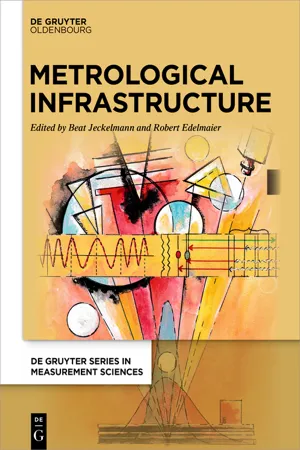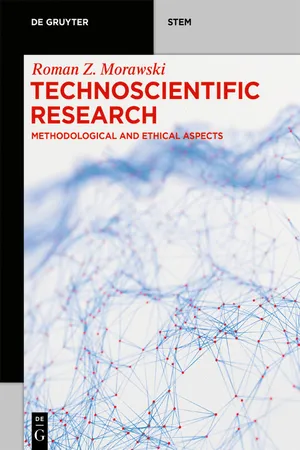Mathematics
Standard Unit
A standard unit in mathematics is a fixed quantity used as a reference for measuring other quantities. It provides a consistent and universally accepted basis for comparison and calculation. Examples of standard units include the meter for length, the kilogram for mass, and the second for time.
Written by Perlego with AI-assistance
Related key terms
3 Key excerpts on "Standard Unit"
- eBook - ePub
The Reform of the International System of Units (SI)
Philosophical, Historical and Sociological Issues
- Nadine de Courtenay, Olivier Darrigol, Oliver Schlaudt(Authors)
- 2019(Publication Date)
- Routledge(Publisher)
The definition of a unit as in equation (4) or equation (5), that does not refer to the relations in the system of quantities, is independent, and dependent is instead a definition, as in equation (6), which does refer to such relations. For example, a definition of length unit based on the relation of length with time and velocity is a dependent definition.2.4 Concepts related to the realization of the definition of quantity units
The main concepts assumed related to the realization of the definition of quantity units are:- quantity realizing the definition of a unit;
- object realizing the definition of a unit;
- calibration;
- metrological traceability chain;
- calibration uncertainty.
A measurement process is based on a measurement procedure that specifies a way for comparing the measurand and the unit. This comparison implies the availability of a quantity that realizes the definition of the unit through the realization of a support of that quantity. The object realizing the definition of a unit is called a measurement standard. The comparison with a unit is then generally obtained by realizing a chain of measurement standards, from a primary one to the working standard used in measurement and calibrated against the primary standard through a metrological traceability chain. In the processes of calibration that yields the chain, a calibration uncertainty is produced that generally increases in each step of the chain from the primary standard to the standard involved in the measuring system.3 Basic criteria
The main operative target of the definition of a system of units is to provide a basis for measurement, for which quantity units are indeed essential.10 - eBook - ePub
- Beat Jeckelmann, Robert Edelmaier, Beat Jeckelmann, Robert Edelmaier, Beat Jeckelmann, Robert Edelmaier(Authors)
- 2023(Publication Date)
- De Gruyter Oldenbourg(Publisher)
International system of units: Concept and current design
Beat JeckelmannMuntelier , SwitzerlandAbstract
Measurement processes determine our everyday life. A system of measurement units that is valid and accepted worldwide and across all disciplines, is the prerequisite for measurement results to be comparable and interpreted correctly everywhere. After great confusion in the Middle Ages, the decisive impulse for the design of such a system came from France. At the time of the French Revolution, the foundations for the decimal metric system were laid by tracing the unit of length, the meter, back to part of the Earth’s meridian. Finally, with the signing of the Metre Convention in 1875, the step was taken toward standardizing the units of measurement beyond national borders. After that, the metric system was able to expand and develop over the years according to the increasing needs of science and technology. It became the International System of Units (SI) with seven base units today. It can be used in all scientific and practical measurement tasks and is rightly regarded as the technical language of science. The SI remains adaptable to the needs of all areas of science and adjustments are made when necessary. In 2018, a fundamental revision of the SI took place. For the first time, the SI became free of artefacts. The realization of units is now conceptually detached from the definition. A unit defined by the fixed value of natural constants can be realized in accordance with the laws of physics. Improvements in realization are possible without having to redefine the unit.In this chapter, a brief outline of the history and background of the SI is given, the 2018 revision of the SI is explained, and the resulting possibilities are outlined.1 Introduction
Measurement determines our everyday life. There is hardly any activity that does not involve a measurement task in some way, be it in the private sphere, in the practice of a craft, in industry or in research. William Thomson, later Lord Kelvin, expressed the importance of measuring at the end of the eighteenth century as follows: - No longer available |Learn more
Technoscientific Research
Methodological and Ethical Aspects
- Roman Z. Morawski(Author)
- 2019(Publication Date)
- De Gruyter(Publisher)
A measurement unit is defined there as a “real scalar quantity, defined and adopted by convention, with which any other quantity of the same kind can be compared to express the ratio of the two quantities as a number” 143. From the today’s science point of view, such understanding of measurement is not general enough to meet the needs of contemporary scientific research. Seeing measurement as a special case of the parametric identification of a mathematical model seems to be the outcome of the development of measurement theory during the last 150 years. Although the history of measurements and measures may be traced back to the ancient Egypt and Mesopotamia, the first mature attempts of theoretical approach to measurement appeared only in the second half of the nineteenth century. In 1887, the German physician and physicist Hermann L. F. von Helmholtz published a small treaty “Zählen und Messen erkenntnisstheoretisch betrachet” 144 which initiated a stream of works aimed at the development of an axiomatic theory of measurement. Those works reached maturity in the period of 20 years separating the publication of a seminal article “A Set of Independent Axioms for Extensive Quantities” 145 (1951) – authored by the American philosopher Patrick C. Suppes (1922–2014) – and the appearance of the first volume of a fundamental handbook Foundations of Measurement 146 (1971). The latter initiated a large-scale synthesis of the so-called representational theory of measurement, the synthesis completed only in 1989–1990 when two consecutive volumes of that handbook appeared 147, 148. In the representational theory of measurement, measurement is defined as the construction of a homomorphism from an empirical relational system E ; r 1 E, r 2 E,... into a numerical relational system N ; r 1 N, r 2 N,...
Index pages curate the most relevant extracts from our library of academic textbooks. They’ve been created using an in-house natural language model (NLM), each adding context and meaning to key research topics.


